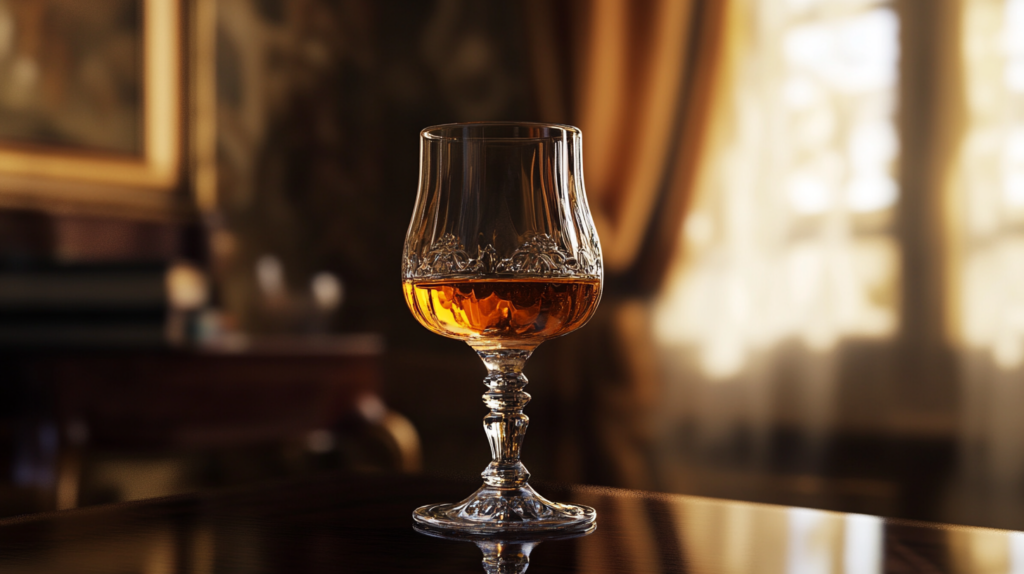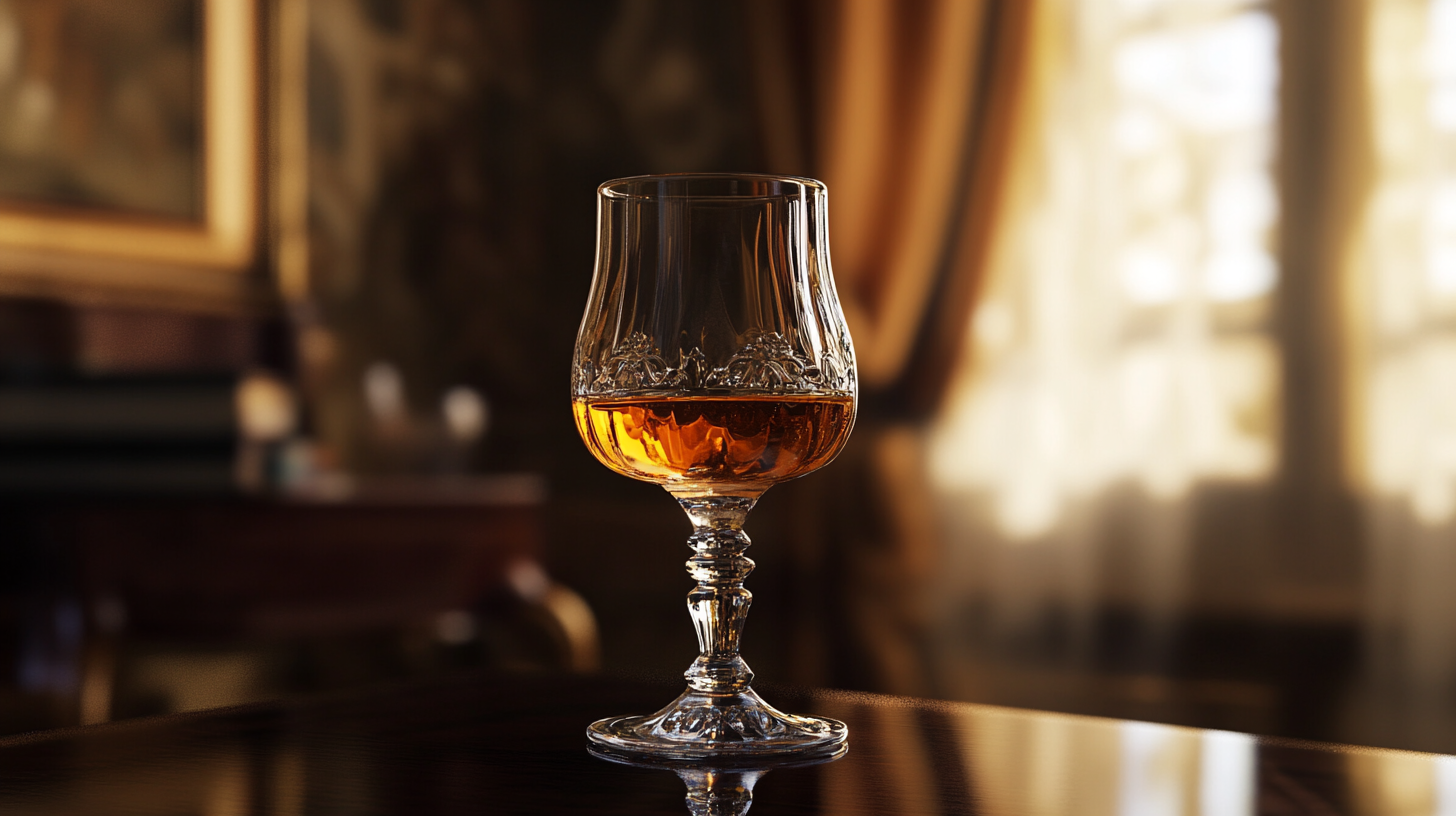
Welcome to your complete guide to fortified wines—a fascinating corner of the wine world known for its bold flavours and rich traditions. Known for their depth and character, fortified wines stand out from the crowd—whether you’re sipping them solo, mixing a cocktail, or enjoying them with food.
Whether you’re just getting started or looking to deepen your appreciation, this guide will walk you through the essentials, from how it’s made to what to pair it with.
What is fortified wine

Fortified wine is produced by introducing a distilled spirit—usually neutral grape brandy—into a finished or partially fermented wine. This process doesn’t just raise the alcohol level; it also shapes the wine’s body, sweetness, and overall complexity. The timing of fortification is key: if the spirit is added early during fermentation, the wine will be sweeter; if added later, the wine will be drier.
Other factors, such as the type of spirit used and how the wine is aged, also play a big role in the final style and flavour.
The base wine
The process begins with the creation of a base wine, using traditional winemaking methods. Grapes are harvested, crushed, and fermented to form a standard wine, which acts as the foundation for fortification.
Fortification process
After the base wine is made, the distilled spirit is added. Producers carefully decide when to add the spirit based on the desired sweetness level and style. This step stops fermentation and locks in the wine’s structure and flavour direction.
Ageing
Ageing methods vary depending on the style of fortified wine being produced:
- Oxidative ageing (exposure to air) results in deep, nutty, and caramelised flavours, as found in tawny Ports or certain Sherries.
- Reductive ageing (minimal air contact) preserves fresher, more delicate notes, common in styles like Fino Sherry.
Types of fortified wine
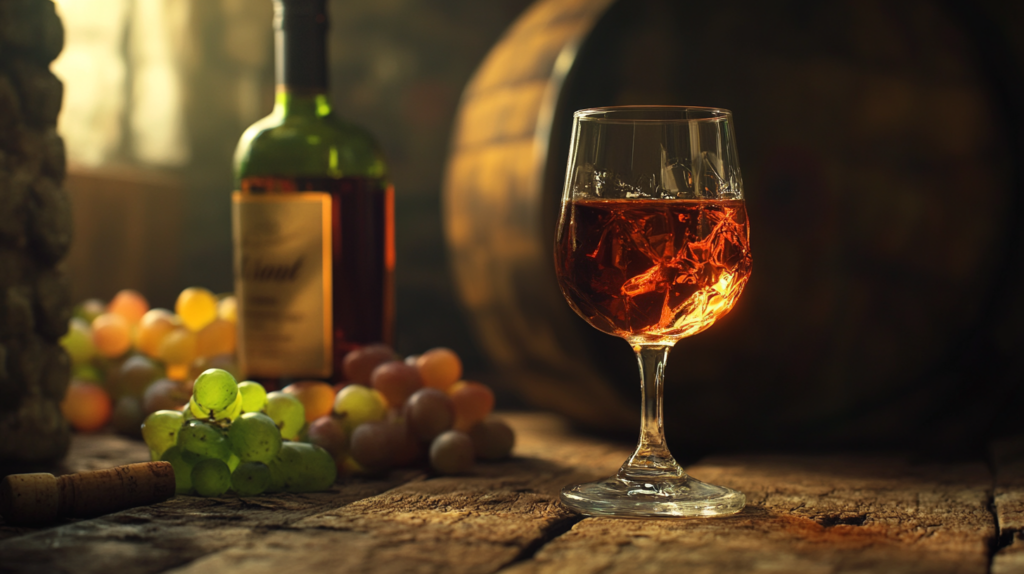
There are several distinct styles of fortified wine, each with its own production methods, origins, and flavour characteristics. Here are the most well-known types:
Port
Port is a sweet, red fortified wine from Portugal’s Douro Valley. It’s usually rich and full-bodied, often enjoyed as a dessert wine. Styles include Ruby, Tawny, and Vintage Port, each with different ageing processes and flavour profiles.
Sherry
Sherry comes from Jerez in southern Spain and offers a wide spectrum of styles, from bone-dry Fino and Manzanilla to sweet Pedro Ximénez (PX) and Cream Sherries. It’s incredibly versatile and can be used in cooking, sipping, or cocktails.
Madeira
Madeira is a Portuguese fortified wine from the Madeira Islands. It’s known for its incredible longevity and resilience to oxidation, resulting in flavours like caramel, nuts, and dried fruit. Styles include Sercial (dry), Verdelho (medium dry), Bual (medium sweet), and Malmsey (sweet).
Marsala
Marsala originates from Sicily, Italy. It ranges from dry to sweet and is often used in cooking (think Chicken Marsala), though high-quality Marsalas are also enjoyable as sipping wines.
Vermouth
Vermouth is an aromatised, fortified wine flavoured with botanicals. Though often associated with cocktails like the Martini or Negroni, good vermouth can be sipped on its own. Styles include dry, sweet (red), and blanc (semi-sweet white).
How to serve fortified wine
Serving fortified wine correctly enhances the experience, allowing its aromas and flavours to shine. Whether you’re pouring a dry Sherry as an aperitif or ending the evening with a glass of Port, here are some key tips:
Serving temperature
- Dry Sherry (Fino, Manzanilla): Serve well chilled (7–9°C / 45–48°F)
- Sweet Sherry (PX, Cream): Slightly chilled (10–12°C / 50–54°F)
- Port (Ruby, Tawny, Vintage): Slightly below room temperature (12–16°C / 54–60°F)
- Madeira: Depends on style—drier types chilled, sweeter types closer to room temperature
- Vermouth: Always serve chilled, whether neat or in a cocktail
Glassware
Use smaller wine glasses or tulip-shaped glasses that help concentrate the aromas. A Port or Sherry glass is ideal, but a standard white wine glass works too—just pour a smaller amount (typically 60–90 ml or 2–3 oz).
Serving size
Fortified wines are more alcoholic than regular wine, so smaller servings are customary. A standard pour is about half that of a table wine.
Decanting
Some fortified wines, particularly Vintage Port, benefit from decanting to remove sediment and allow the flavours to open up. Others, like most Sherries or vermouths, can be poured straight from the bottle.
Fortified wine food pairings

Fortified wines are incredibly versatile when it comes to food pairing, offering everything from crisp, dry aperitifs to rich, dessert-worthy sippers. Their concentrated flavours and varying sweetness levels make them ideal companions for both savoury and sweet dishes.
Savoury pairings
- Fino or Manzanilla Sherry: Perfect with olives, almonds, seafood, and tapas.
- Dry Vermouth: Excellent with salty snacks like nuts or hard cheeses.
- Madeira (Sercial or Verdelho): A great match for roasted nuts, hard cheeses, and smoked fish.
Sweet pairings
- Tawny Port: Ideal with blue cheese, walnuts, and dried fruits.
- Vintage Port: Pairs beautifully with dark chocolate or strong cheeses like Stilton.
- Pedro Ximénez Sherry: Delicious with vanilla ice cream, sticky toffee pudding, or chocolate cake.
- Malmsey Madeira: Works well with rich desserts and fruitcake.
Popular fortified wine cocktails
Fortified wines aren’t just for sipping—they’re essential ingredients in some of the world’s best-loved cocktails. Thanks to their bold, complex flavours, they add depth, sweetness, bitterness, or dryness to a drink depending on the style used. Here are a few classic cocktails that highlight the versatility of fortified wine:
Martini (dry vermouth)
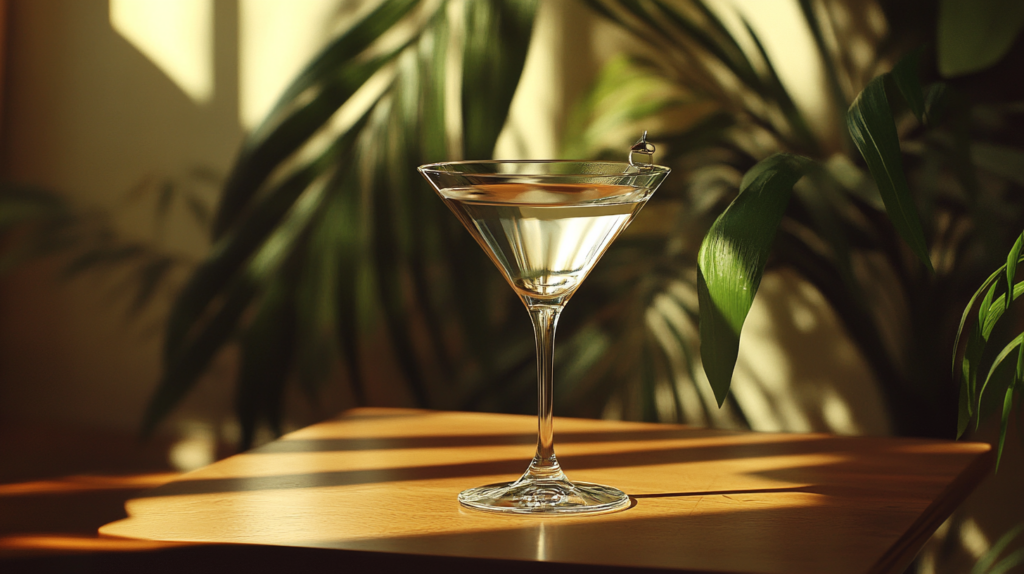
Martini (dry vermouth)
A timeless, elegant cocktail with a clean, crisp flavour.
Ingredients:
- 60 ml (2 oz) gin
- 15 ml (½ oz) dry vermouth
- Lemon twist or olive for garnish
How to make:
Stir the gin and vermouth with ice until well chilled. Strain into a chilled Martini glass. Garnish with a lemon twist or olive.
Negroni (sweet vermouth)

Bold and bitter, the Negroni is a perfectly balanced aperitif.
Ingredients:
- 30 ml (1 oz) gin
- 30 ml (1 oz) sweet vermouth
- 30 ml (1 oz) Campari
- Orange slice or peel for garnish
How to make:
Stir all ingredients with ice in a mixing glass. Strain into a rocks glass over ice. Garnish with an orange slice or twist.
Manhattan (sweet vermouth)
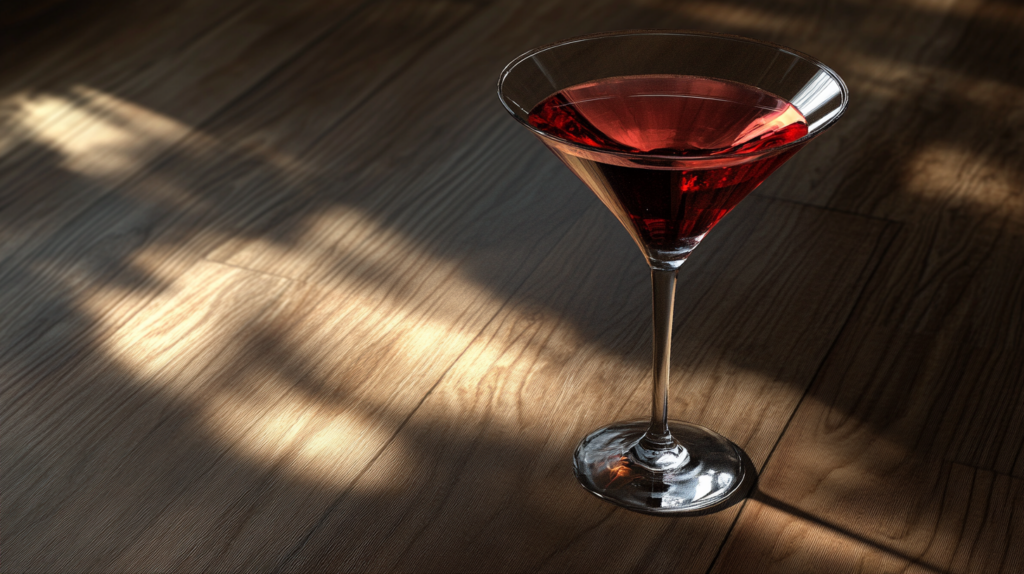
Smooth and warming, the Manhattan is a whiskey lover’s go-to.
Ingredients:
- 60 ml (2 oz) rye or bourbon
- 30 ml (1 oz) sweet vermouth
- 2 dashes Angostura bitters
- Cherry for garnish
How to make:
Stir all ingredients with ice until well chilled. Strain into a coupe or Martini glass. Garnish with a cherry.
Adonis (Sherry)

A low-ABV, aromatic cocktail that’s nutty, herbal, and easy to sip.
Ingredients:
- 45 ml (1½ oz) dry Sherry (like Fino or Amontillado)
- 30 ml (1 oz) sweet vermouth
- 2 dashes orange bitters
- Orange twist for garnish
How to make:
Stir ingredients with ice and strain into a chilled coupe glass. Garnish with an orange twist.
Port & Tonic
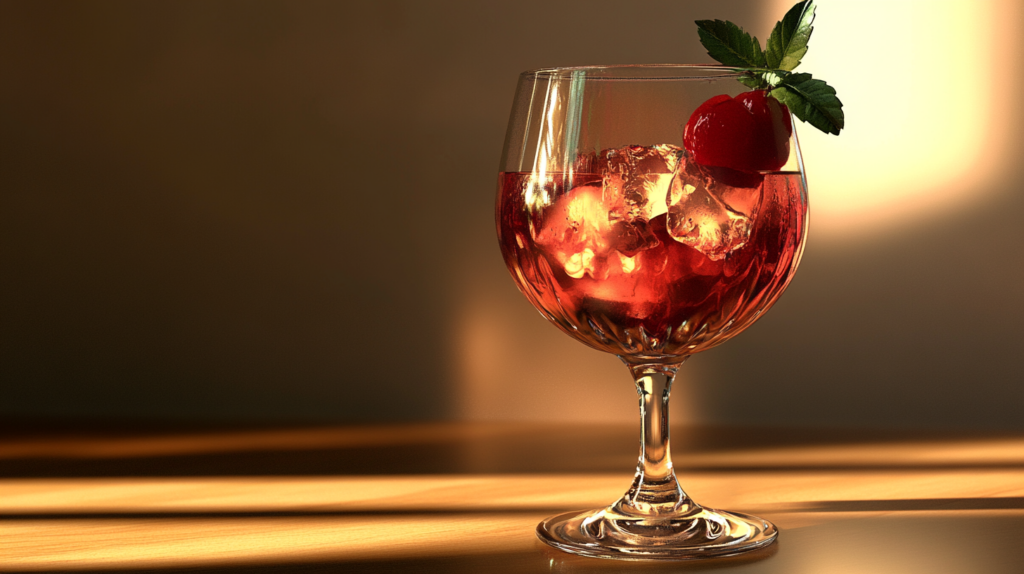
A light, fizzy drink with a refreshing citrus edge—perfect for summer.
Ingredients:
- 60 ml (2 oz) white or ruby Port
- 90–120 ml (3–4 oz) tonic water
- Lime or orange wedge for garnish
How to make:
Fill a highball glass with ice. Add Port and top with tonic water. Stir gently and garnish with a citrus wedge.
FAQs
What’s the difference between fortified wine and regular wine?
Fortified wine has a distilled spirit, usually grape brandy, added to it. This increases the alcohol content and often enhances its shelf life and flavour complexity. Regular wine is made solely from fermented grape juice and has a lower alcohol content.
How should I store fortified wine?
Once opened, most fortified wines last longer than regular wines. Store them in a cool, dark place, preferably in the fridge. Some, like Sherry or Vermouth, are best consumed within a few weeks to a couple of months, while others like Port or Madeira can last for several months or even years if stored properly.
What glass should I use for fortified wine?
Use a smaller wine glass or a special fortified wine glass (like a Port or Sherry glass). The idea is to concentrate the aromas while controlling portion size due to the higher alcohol content.
Conclusion
Fortified wine is a diverse and rewarding category that offers something for every palate. From bone-dry Sherries to rich Ports and aromatic Vermouths, these wines carry depth, history, and versatility. Whether you’re enjoying a glass on its own, mixing a cocktail, or pairing it with food, fortified wine is a delicious way to explore the craftsmanship of winemaking with a unique twist.

